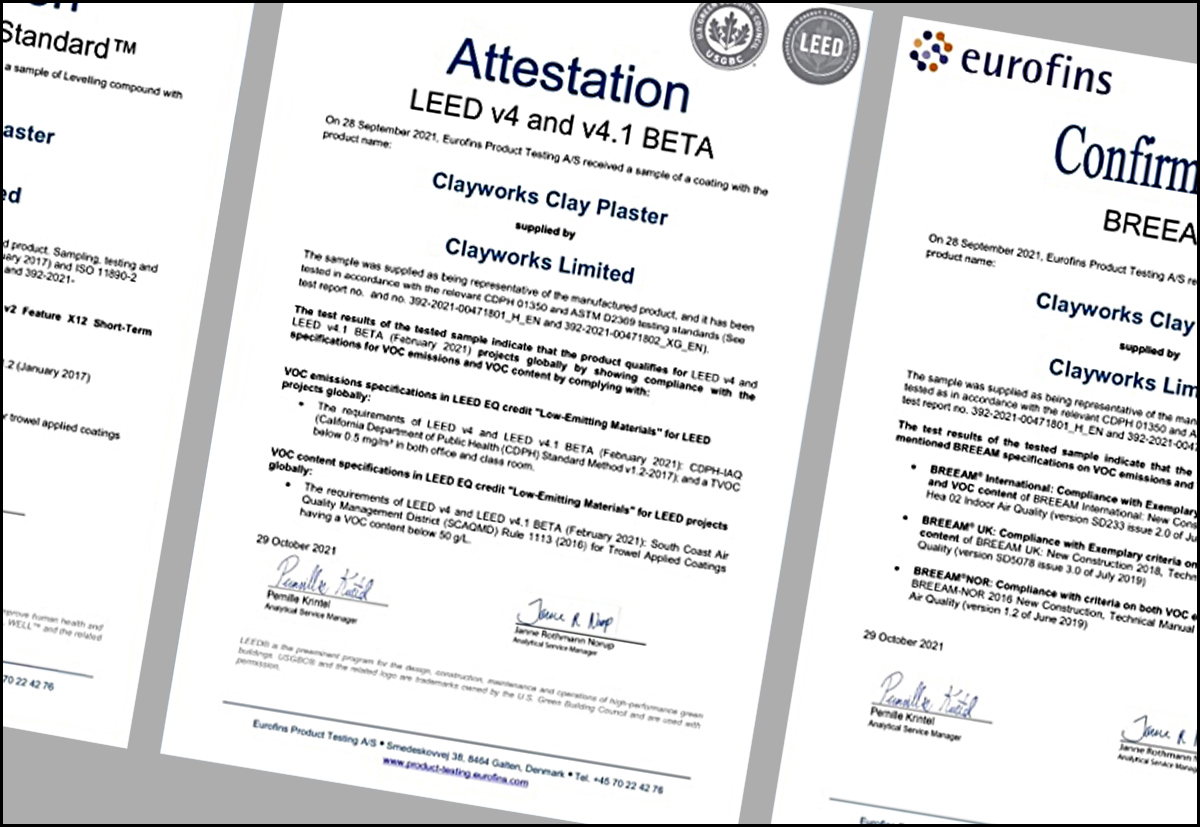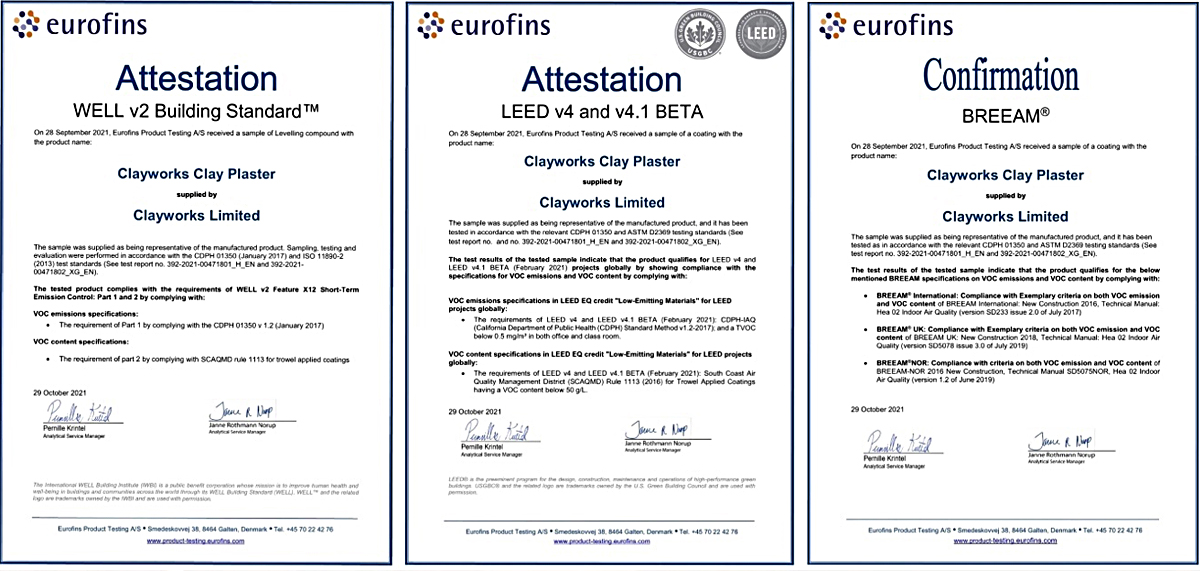
VOC Certification for LEED, BREEAM and WELL
It is very well documented that natural geological materials such as earthen materials do not emit VOCs, but clay plasters are not exempt from requiring certification by the standards LEED, BREEAM and WELL.
And so Clayworks has recently had verified VOC testing of our materials and we are delighted that we can now offer our clients product certificates to say that they adhere to the standards for each of the 3 leading global certification programmes.
LEED V4 IEQ
It is the intent of LEED to reduce the quantity of indoor air contaminants that are odorous, irritating and/or harmful to the comfort and well-being of installers and occupants. LEED sets high standards for testing demanding that all interior wall coverings shall meet the testing and product requirements of the California Department of Health Services Standard Practice for The Testing of Volatile Organic Emissions from various sources using small-scale environmental chambers, including 2004 Addenda.
The Low Emitting Materials credit rewards the choice of healthy materials in order to reduce concentrations of chemical contaminants that can damage air quality, human health and productivity and the environment, in particular the VOC emissions in the indoor air and the VOC content of the materials.
BREEAM
BREEAM awards credits for the production of an indoor air quality plan that has the objective of facilitating design, specification and installation decisions and actions that minimise indoor air pollution during occupation of the building. The indoor air quality plan must consider the following:
a. Removal of contaminant sources
b. Dilution and control of contaminant sources
c. Procedures for pre-occupancy flush out
d. Third party testing and analysis
e. Maintaining indoor air quality in-use
The VOC test and emissions certificate will support and evidence such a plan.
WELL
WELL Feature X06 requires adherence to emission thresholds for materials placed inside the building envelope. The selection of products with low or no VOC emissions is instrumental to prevent worsening in air quality. When VOCs are emitted, careful material selection in newly built spaces has been shown to accelerate VOCs reduction (i.e. off-gassing) to background levels. Reducing level of toxic compound emission will also help to reduce the demands of ventilation which uses a lot of operational energy.
VOCs – the issue
There are around 1000 Volatile Organic Compounds in circulation in many common building products. VOCs encompass a wide group of volatile substances of both natural and artificial origins which have a wide range of health effects from nose, eye and throat irritation, headaches and nausea to liver, kidney and central nervous system damage. Furthermore, some select VOCs are known or suspected carcinogens. Source IWBI.
The presence of VOCs has also been proven to have an effect on mental health and productivity: important for work place design. A study by Harvard T. H. Chan School of Public Health (Joseph G Allen et al) showed that cognitive scores of participants were over 61% higher in low VOC spaces.


